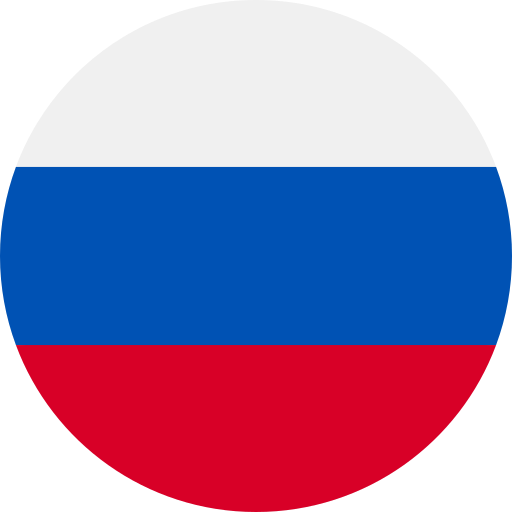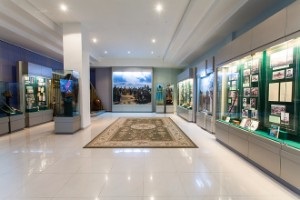Since its foundation, the museum has been actively involved in the cultural life of the city of Uralsk. Over the ten years of the museum's activity, more than 30 thousand people have visited it.The museum staff conducted 1,335 excursions and 130 cultural events. The museum is developing, and its employees are doing a great job of finding new exhibits, creating stands and improving the exposition.
The history of the museum is unusual and can serve as an example of the successful implementation of public and civil initiatives for the benefit of the development of Kazakh culture. The basis for the creation of the museum was a small university museum of the West Kazakhstan Agrarian and Technical University named after Zhangir Khan.
At the initiative of the rector of the university, Professor K. K. Bozymov, in order to socialize students and educate young people in the spirit of Kazakhstan patriotism, in 2003, work was started on the creation of a museum of the history of the university. The museum was opened in the fall of 2003, on the eve of the 40th anniversary of the university. Veteran teachers such as A. A. Karasaev, A.D. Darbayev, B. B. Traisov, G. K. Moldashev and others contributed to the preparation of the new museum of the university's history. The valuable exhibits were presented to the museum by the former director of the Scientific Library of the University R. Zh. Isataeva.
In order to support the state program "Cultural Heritage", proposed by the President in his Address to the People of Kazakhstan in 2003, work began on finding ways to develop the museum.
Since March 1, 2004, the museum, which began its work as a university, has become a structural division of the West Kazakhstan Regional Museum of Local History. From that day on, all the exhibits of the museum were taken under state protection and received a guarantee of safety, and the allocation of additional staff for the museum created conditions for further development. In 2008, the exhibition area of the museum expanded to 327 sq. m. due to the introduction of two new halls.
Zhangir Khan was one of the first to realize the consequences of the crisis of nomadic culture and the trends in the development of world civilizations. He takes decisive measures and radical reforms in the internal policy of the Bukeev Khanate. In 1827, he completed the construction of the Khan's Headquarters and set an example for home-building. The urbanization and professional education of the society, the development of commodity-money relations-these and other extraordinary steps allowed him to achieve overall political calm and ensure a high standard of living for the people under his control. Graduates of his school became outstanding figures of the region and Kazakhstan, activists of the Alash movement and the Alash Orda autonomy, deputies of the State Duma of Russia, educators and scientists, Heroes of peaceful and military labor. For the first time, the word "Kazakhstan" was introduced into the Kazakh lexicon by publishing a newspaper of the same name. Namely, the school of Zhangir Khan (1841) gave a surge to the rapid growth of the Khan's Rate. The capital in Peski has become a large, commercial, industrial, school and multinational administrative center. Since then, the school has become a city-forming and unifying beginning in the vast expanses of Kazakhstan.
The main purpose and task of the Historical and Ethnographic Museum named after him. Zhangir Khan was the creation of a thoroughly worked out in the methodological and scientific plan of the subject-documentary image of Khan Zhangir as a statesman, reformer and educator of the XIX century, as well as the truthful disclosure of the centuries-old culture, life and traditions of the Kazakh people.
The central place in the museum's exposition is occupied by the Zhangir Khan Hall. Here, on the basis of original documents found in 2004-2008 in the archives and libraries of the cities of Kazan, Orenburg, Saratov, St. Petersburg and Moscow, his intense and fruitful work is shown. Polyglot, politician and diplomat, philanthropist and ascetic of science, all his thoughts were about the well-being and prosperity of the Kazakh people. His enlightened mind, broad outlook and indomitable will allowed him to conduct extensive business and scientific correspondence with prominent figures and scientists of Russia and Europe.
The ethnography hall presents works of folk applied art, household items, horse harness, and national costumes. On the basis of authentic ethnographic exhibits, the unique world of the material and spiritual culture of the nomadic people opens up to the visitors of the museum. In the heart of the kiizui hall is a felt house, against the background of the picturesque canvas "The village is preparing for toi". The yurt-otau for the newlyweds, the bride's dowry-zhasau, household items and folk and applied art of the Kazakhs organically complement the exhibition.
In the hall of the Bukeevskaya Horde there are many documents and photographs of the XIX century, copies of books with the seal of Zhangir Khan, taken from the National Library of the Republic of Tatarstan.
Address: Uralsk, Zhangir Khan, 51, 2nd floor
Phone: 8 (7112) 51-61-37

 USD 512.1
USD 512.1 EUR 583.64
EUR 583.64 RUB 6.5
RUB 6.5


